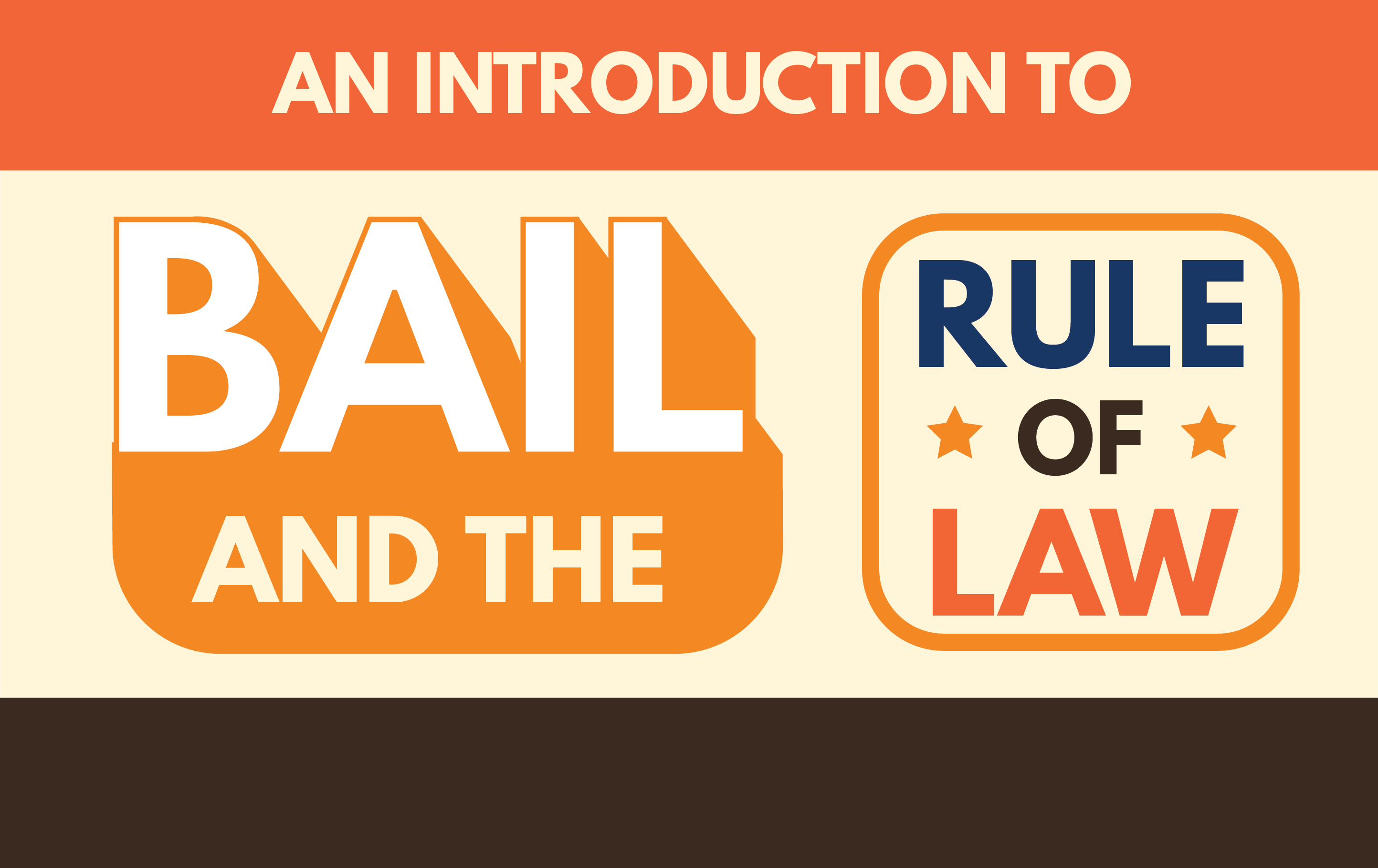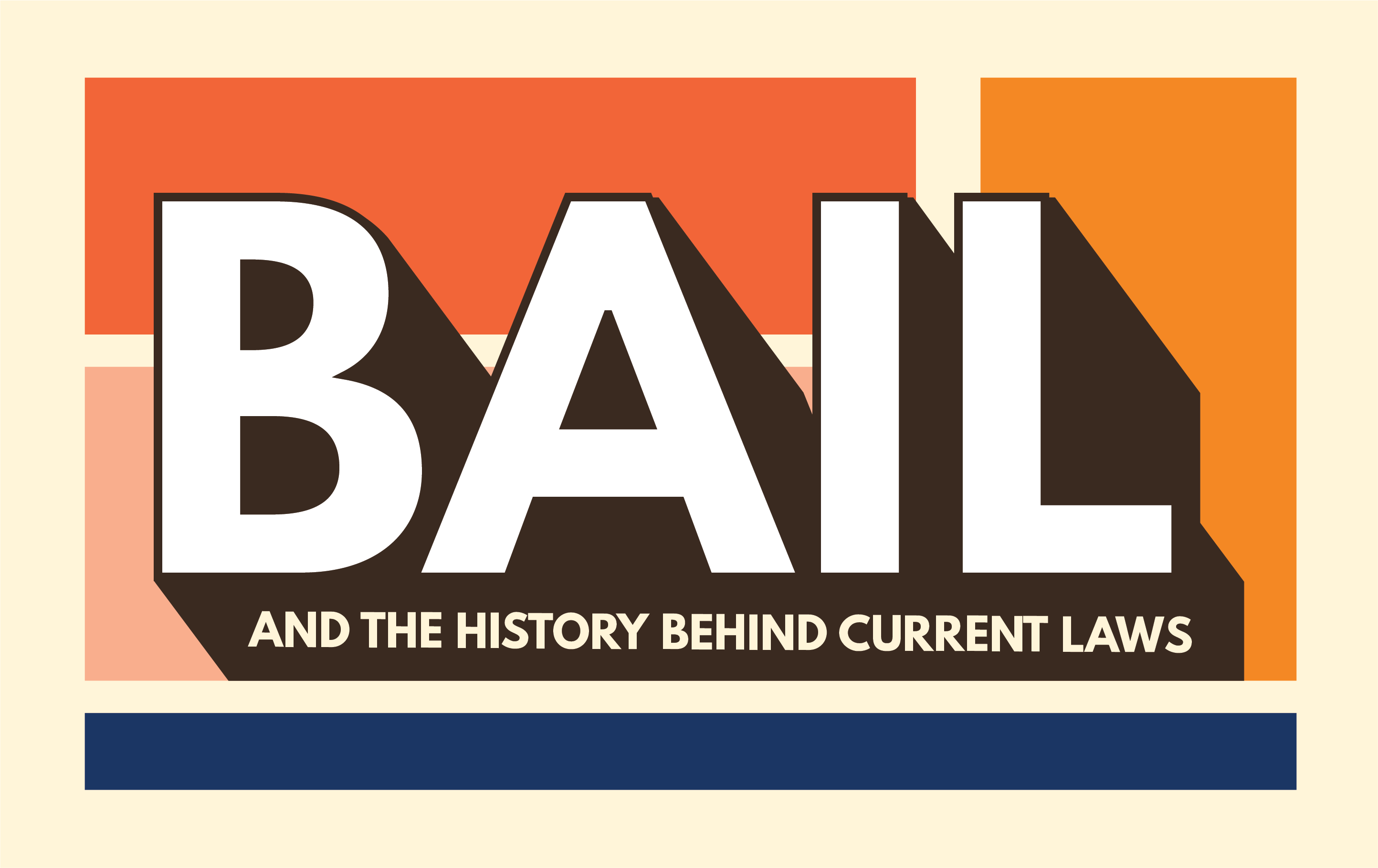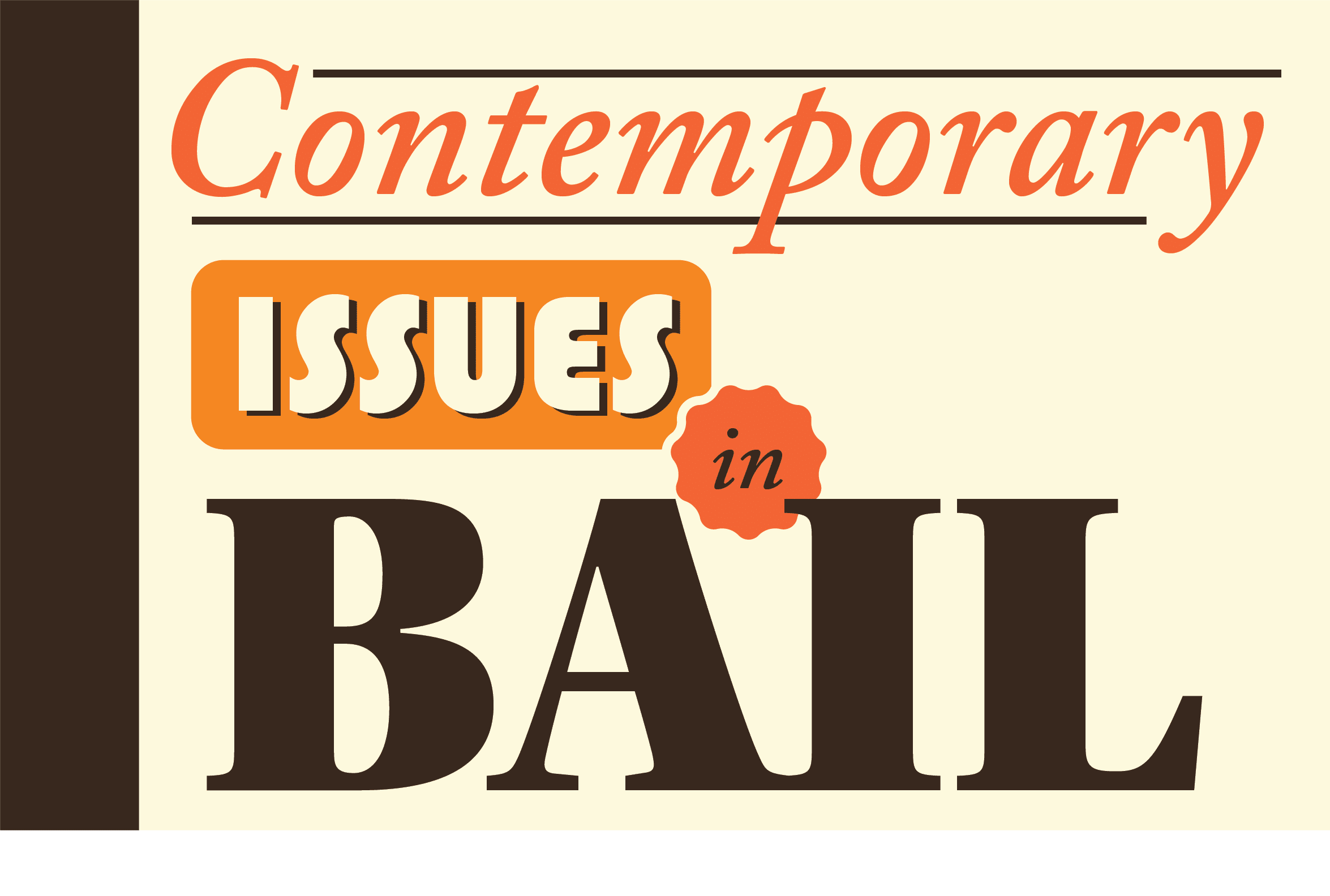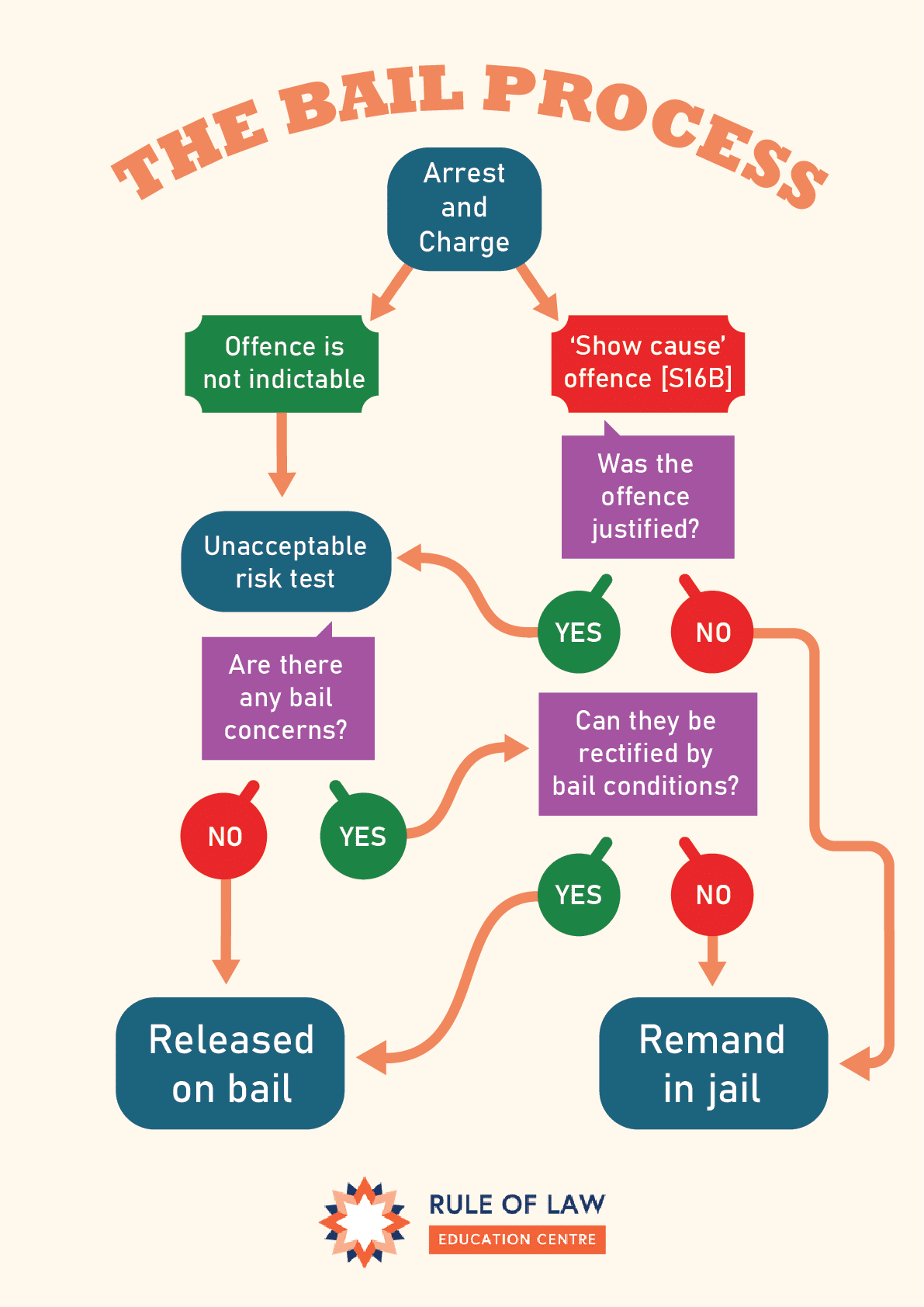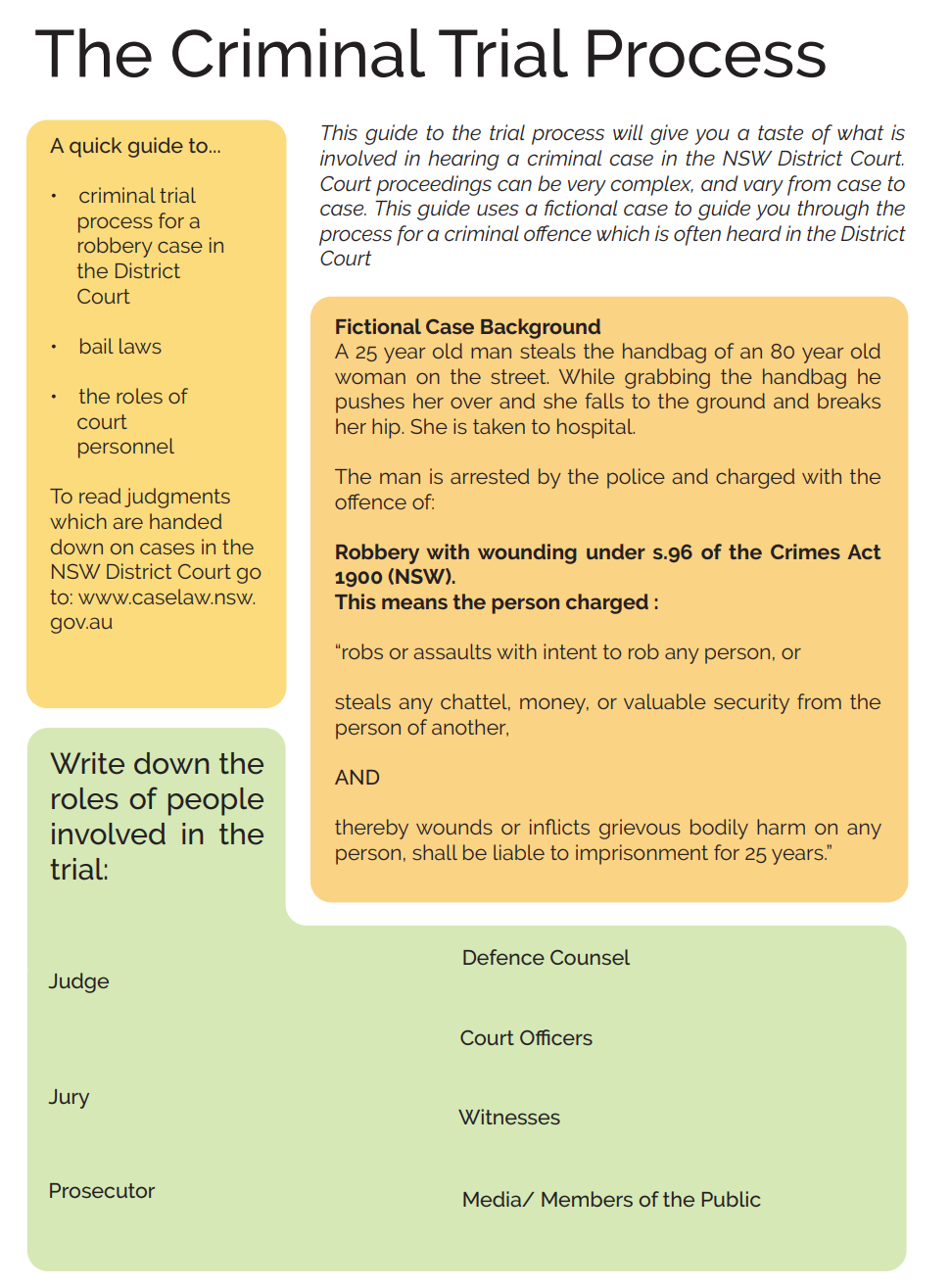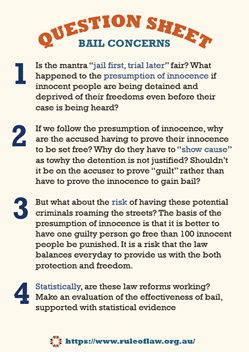Explanation of Bail, History Behind Current Laws and Recent Changes to Bail Laws
Have you ever wondered why Bail holds relevance to the rule of law? Have you ever wondered what bail is and how it continues to impact our modern Australian society?
There is a lot of information out there and we have created three primary pages for you to check out that clarify the issue of bail. Click on the below images to follow the links:
What is bail and the bail process?
After an individual is arrested and charged with an offence, a bail authority, usually either the police or a judge, will decide if they can spend their time in the community prior to their trial or if they will be held in goal (or remand) under the relevant legislation. The primary considerations for deciding whether to grant bail include the safety of the community, the potential for reoffending and whether the bail applicant will appear at court throughout the trial process.
Bail is not intended as a punishment for the guilty party. Instead, the purpose is to evaluate whether a person can remain safely in our community without risking the safety of themselves and others around them throughout their trial process, and that they will participate in that trial process as needed.
Bail Legislation in Australia
-
- Bail Act 2013 (NSW)
- Bail Act 1980 (QLD)
- Bail Act 1977 (VIC)
- Bail Act 1985 (SA)
-
- Bail Act 1982 (WA)
- Bail Act 1994 (TAS)
- Bail Act 1992 (ACT)
- Bail Act 1982 (NT)
Case Study: Bail in NSW
In NSW, Bail is regulated by the Bail Act 2013.
Under s16B of this Act, if a person arrested has been charged with a ‘show cause’ offence, for example, any serious indictable offence as listed in Part 3 and 3A of the Crimes Act 1900 (NSW), individuals must ‘show cause’. Show cause means the person arrested and charged must explain why being held in a correctional facility throughout the trial process is unjustified and unfair. They are essentially ‘showing cause’ for their release. If the alleged offender is under 18 at the time of the offence, then even if it was serious offence, they do not have to show cause.
The courts will then also identify the seriousness of the crime and any mitigating or aggravating factors such as whether the accused was already on bail or parole, as well as other considerations, such as health, family circumstance or issues of addiction to determine whether bail should be granted.
If they did not commit a show cause offence, then the court will automatically begin to consider bail concerns per part 3, division 2 of the Act. Section 21 states that there are special rules for offences which can result in a right to release, including fine-only offences, certain offences under the Summary Offences Act 1988 that are not excluded, or the Young Offenders Act 1997 where children under 18 years of age are dealt with by conference.
‘Bail concerns’ refer to four primary questions that must be answered in s17 of the Act that are part of the ‘Unacceptable Risk Test’. These include whether:
1. the individual will attend court when they are required to
2. if they have committed a serious offence,
3. if they will endanger anyone in the community and
4. if the accused will interfere with witnesses or evidence.ometimes bail concerns may be rectified through the implementation of bail conditions such as reporting to a police officer daily or paying a certain amount of money. If these conditions are breached, the individual can have their bail revoked.
On the other hand, if there is a chance that the answer is no to any of those questions, it is regarded as an ‘unacceptable risk’ according to s19 of the Act. If the individual fails the risk assessment, they will ultimately be denied bail and instead kept in custody. This is the last step in the process of being granted bail.
March 2024 Bail Reforms in NSW
On March 21, 2024, NSW Parliament passed amendments to the Bail Act 2013. These amendments were made in response to escalating crime rates by offenders, particularly young offenders, in the commission of motor vehicle theft and serious break and enter offences. In some areas of regional NSW, such as Moree, between 2022 and 2023, break and enter offences were up to 840% higher than the state average, and motor vehicle theft up to 680% higher according to BOCSAR.
The changes to the Bail Act focussed on:
s22C: Temporary new bail test for offenders 14-18 years old
A temporary new bail test at for offenders aged between 14 and 18 charged with committing serious break and enter offences or motor vehicle offences while on bail for similar offences has been introduced. This new test requires that the bail authority must have a high degree of confidence that the young person will not commit another serious indictable offence if granted bail on the new alleged offence. This requirement is set to ‘sunset’ after 12 months, meaning that it will no longer be in force after March 21, 2025, and its effectiveness will be reviewed by the Department of Communities and Justice using data from BOCSAR.
The introduction of a new offence at s154k of the Crimes Act 1900, the ‘Post and Boast’ offence
‘Post and Boast’ is where offenders take pictures or record themselves committing offences and either broadcast it online live or post it to social media pages after the event. Offenders who are found guilty of this offence will automatically receive a 2 year penalty in addition to their sentence for the commission of the break and enter or motor vehicle theft offence. There will be a statutory review of these offences in March 2026 to determine the effectiveness at addressing the issue of post and boast offences.

